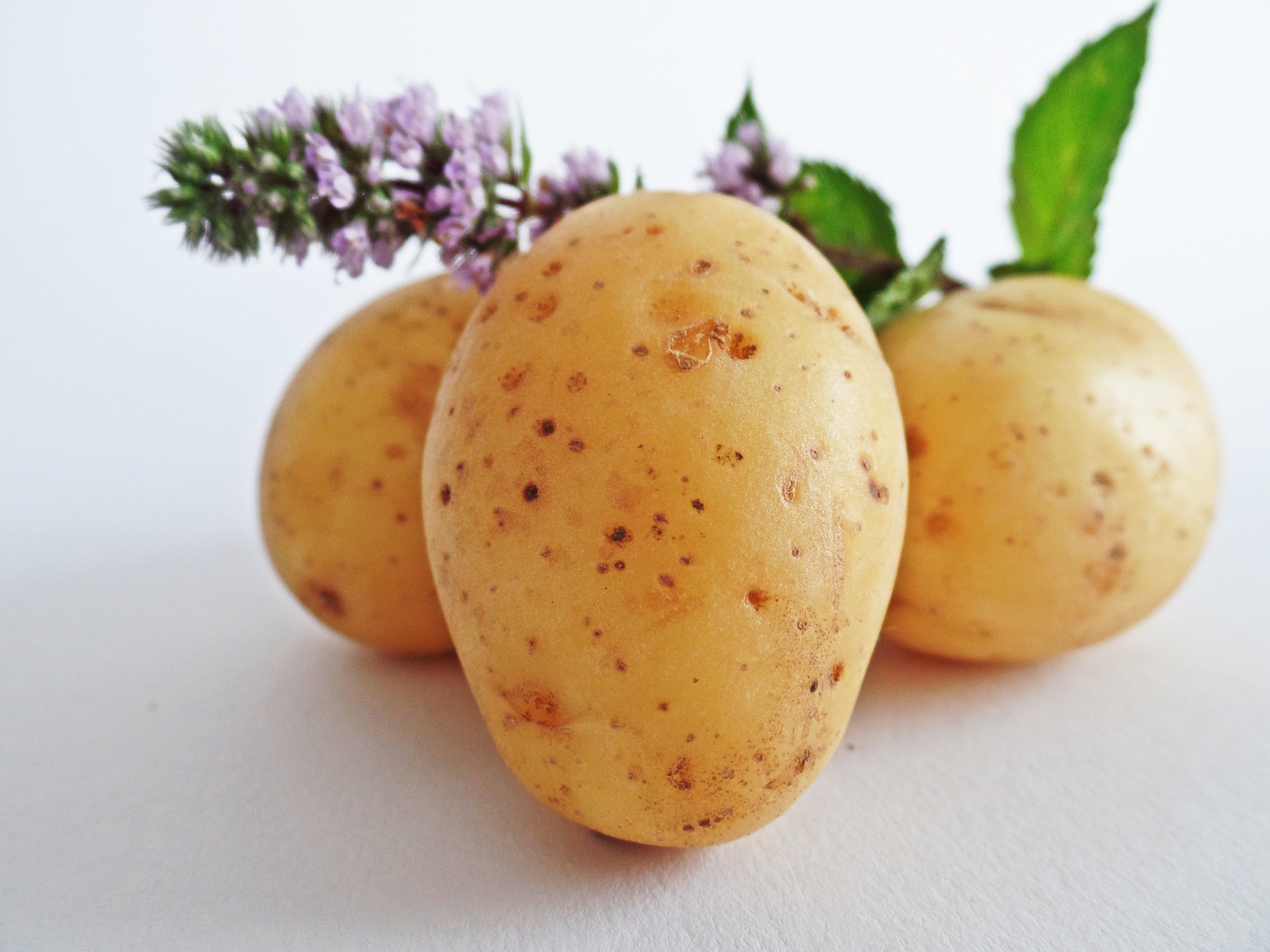When we talk shiny-eyed about veggies, we picture glistening tomatoes, bright orange carrots, and freshly misted greens. Potatoes are the veritable dullard of the veggie group, right up there with turnips. Working even more against the potato is its reputation for being nutrient poor, empty carbs just waiting to pack somewhere onto your body like a sticky little calorie monster.
Well do I have news for you. Potatoes are in season starting in September, and they are packed with nutrients. If you’re not blending them with a cup of cream and butter, or deep-frying them in a vat of oil, potatoes are a great source of fiber, protein, vitamins and minerals.

A cup of potatoes contains over 30% of your daily value of vitamin B6 (associated with energy metabolism) and over 20% of your daily value of potassium, vitamin C, and copper. Those are considered excellent stats. It’s also high in fiber (14% of your daily value), phosphorus, manganese, and other B vitamins. They also contain 4 grams of protein per cup, which is not bad at all for a veggie.
Here are some ways to maximize their nutrient value:
- Eat the skins. At least 50% of the potato’s antioxidant, protein, and fiber content is in its skins. Smaller potatoes like baby or fingerling may yield more skin per serving, making them a more nutritious option.
- Try some colorful options. If you can find purple or red potatoes, or other heirloom varieties, those may be higher in nutrient and antioxidant value. Farmer’s markets are another great source of unique potatoes that have been cultivated for nutrition over storage and texture.
- Save them for tomorrow. Cooking potatoes and then storing them for at least 24 hours changes the structure of the carbohydrate molecules from high glycemic to moderate glycemic, meaning they don’t have as great of an impact on your blood sugar and insulin system. So if that’s your concern about potatoes — just wait a while!
- Enjoy them with a little fat. Another way to slow down the glycemic effect of a potato is to add a little bit of oil, butter, sour cream, or avocado. It’s probably why we love to deep fry and cream them so much — but with a little moderation we can create a healthy balance that moderates the effect of a potato’s glycemic load without going overboard on saturated fats.
- Know your serving sizes. A serving of cooked veggies is about half a cup, or what would cover an open palm (not including fingers). That’s a good way to judge an appropriate serving of potatoes. For the full breadth of nutritional benefits listed above, that would count as 2 veggie servings; in a day we should aim for 2-3 total.
- Get variety in your veggies. Potatoes are on the starchier side. A way to manage this is to make sure you’re getting a variety of veggies throughout the days and weeks: don’t make potatoes your only option. Choosing different types of potatoes each time you get them will also diversify nutrient content.







